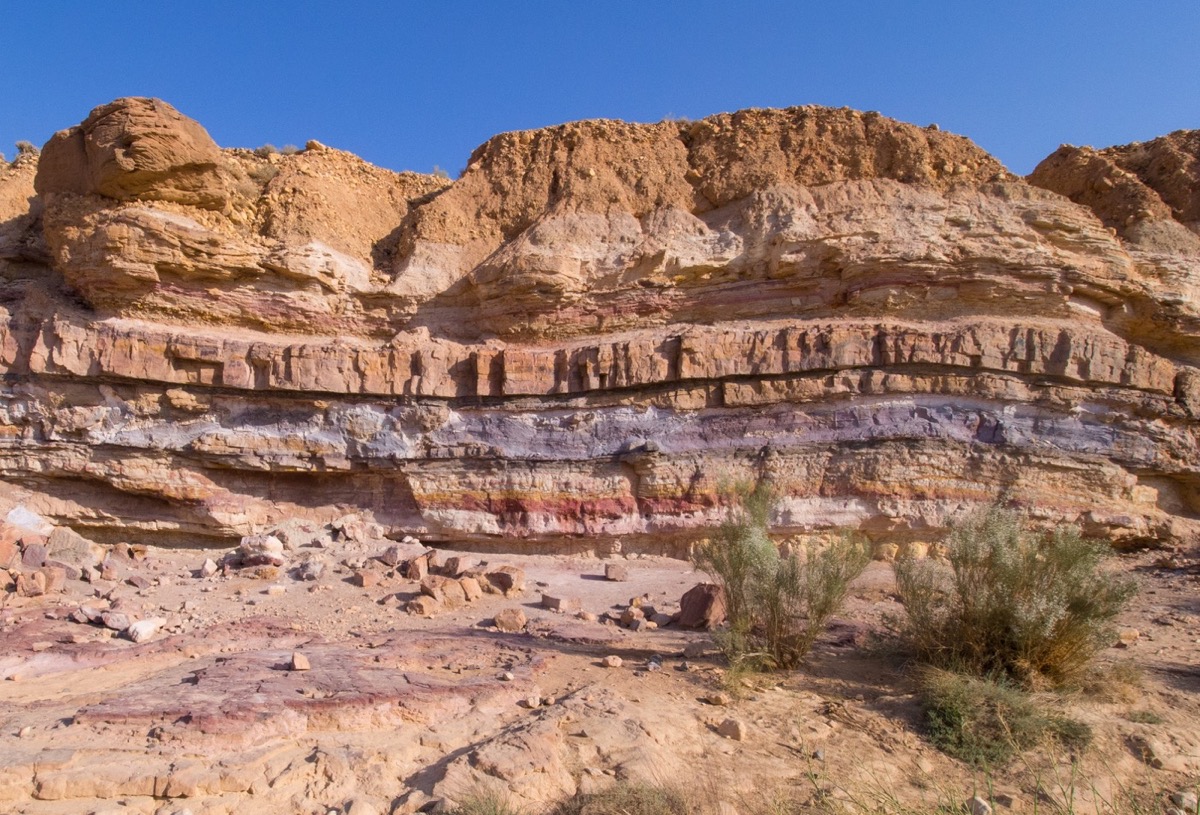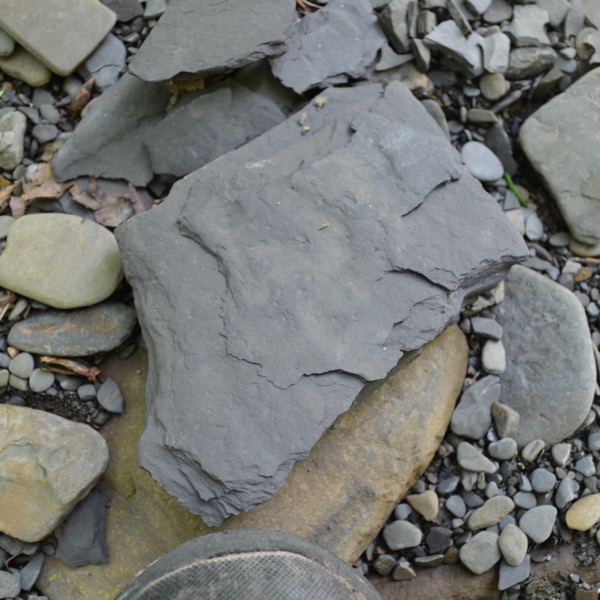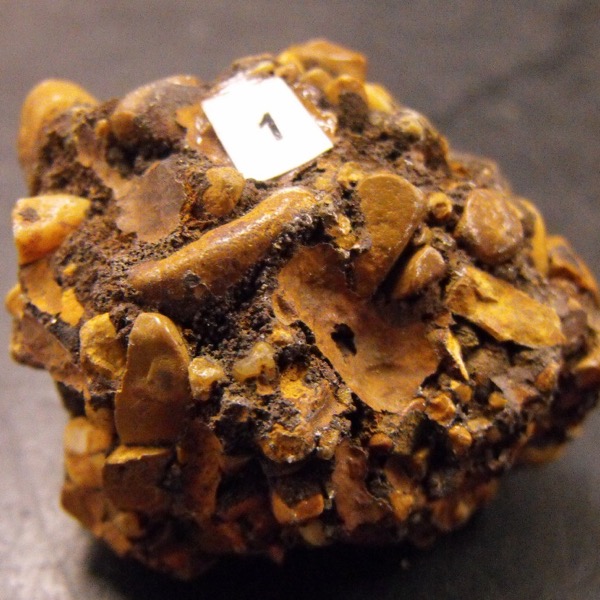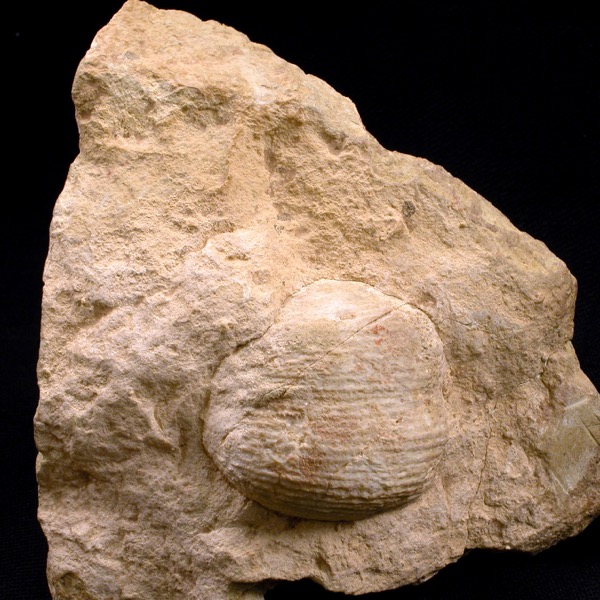7.3: Assignment- Sedimentary Rock Lab
- Page ID
- 12928
Module 7 Assignment
Sedimentary Rock Lab
Overview
You can start the activity after you have completed the reading assignment.
In Chapter 6 you learned about the different types of sedimentary rocks, and some of the key characteristics. In this lab, you will study photos of several sedimentary rocks and determine their physical properties.
Instructions
A. Before you begin this activity, you may also wish to review the Sedimentary Rock Identification page. Some optional resources you can use are:
- PCC Rock and Mineral Guide
- Geology.com Mineral Guide
- Geology.com Rock Guide
- Minerals A-Z, Minerals.net
B. Select each photo below to view the igneous rock samples larger. You can also view the images in Flickr by clicking the link, and zoom in on each of these samples in the picture to get a better view of their texture:
Select an image to view larger
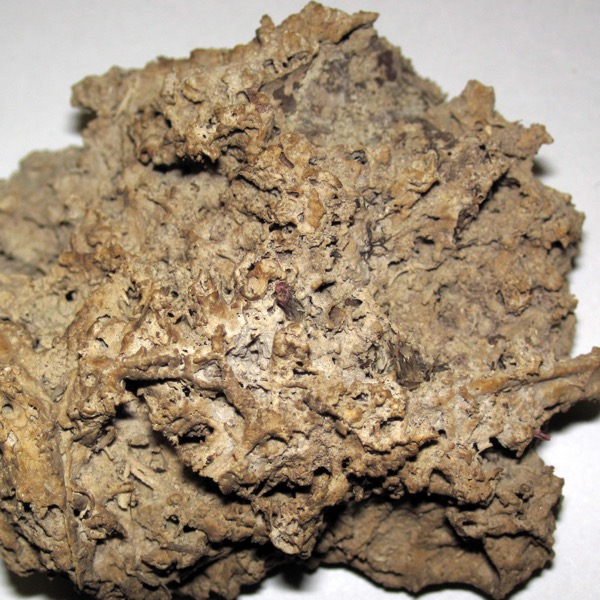

C. Determine the following characteristics to the best of your ability from the photos of the samples above:
- Color
- Texture (clastic or crystalline/chemical?)
- Approximate Grain Size (for clastic rocks only: fine, medium, or coarse grained?)
- Sorting (for clastic rocks only: well-sorted, poorly-sorted, or somewhere in between?)
- Depositional Environment (in what general environment was this rock originally formed?)
- Compare your personal observations with the information in the course Rock and Mineral Guide (above). How is each sample different (or similar) from the Guide?
- For one of the rock samples of your choice, write a half-page summary describing the physical characteristics you can determine from the photo or from any personal sample you have collected. If using a personal sample, please include a photograph. For all the other samples above, include a table summarizing the characteristics you observed (1 – 6). You will be graded on this activity as described in the rubric below.
Grading Rubric
10 points: Report accurately summarized the sedimentary rock characteristics, spelling and grammar are correct and complete sentences are used, including a photograph. Characteristics of the other samples are included in a table and are accurate.
8 points: Report mostly captured the sedimentary rock characteristics, spelling and grammar are mostly correct and complete sentences are used, including a photograph. Characteristics of the other samples are included, but one or two details were missing.
5 points: Report missed two or more characteristics, included spelling and grammar errors, and/or did not include a photograph. Characteristics of the other samples are included, but over half of the samples and/or characteristics are missing.
2 points: Report was inaccurate, included significant spelling and grammar errors, and/or did not include a photograph. Characteristics of the other samples are not included.
0 points: Did not complete the assignment.
- Module 7 Assignment: Sedimentary Rock Lab. Authored by: Anne Huth. Provided by: Pima Community College. Located at: http://cc.pima.edu/~lumen/glg101/module%20parts%20-%20LUMEN/Module7/L_Assign7.html. License: CC BY: Attribution
- Assignment modified from Introductory Geology: A Laboratory Manual. Authored by: B. Deline, R. Harris, and K. Defend, University of North Georgia Press. Located at: https://oer.galileo.usg.edu/cgi/viewcontent.cgi?article=1000&context=geo-textbooks. License: CC BY-SA: Attribution-ShareAlike
- Physical Geology, Adapted by Anne Huth, Pima Community College. Authored by: Steven Earle. Located at: https://opentextbc.ca/geology/. License: CC BY: Attribution
- Laboratory Manual for Introductory Geology, Adapted by Anne Huth, Pima Community College. Authored by: Bradley Deline, Randa Harris, and Karen Defend. Located at: https://open.umn.edu/opentextbooks/BookDetail.aspx?bookId=506. License: CC BY: Attribution
- Figure 1: Layers of sedimentary rock in Makhtesh Ramon, Israel. Authored by: Rhododentrites. Provided by: Wikimedia Commons. Located at: https://commons.wikimedia.org/wiki/File:Layers_of_sedimentary_rock_in_Makhtesh_Ramon_(50749).jpg. License: CC BY-SA: Attribution-ShareAlike
- Figure 2. Black Shale in Whetstone Creek. Authored by: Kyle Hartshorn. Provided by: Flickr. Located at: https://www.flickr.com/photos/kylehartshorn/14789409024/. License: CC BY: Attribution
- Figure 3. Calcareous Tufa with Plant Fragments. Authored by: James St. John. Provided by: Flickr. Located at: https://www.flickr.com/photos/jsjgeology/15589637826. License: CC BY: Attribution
- Figure 4. Quartzrose sandstone. Authored by: James St. John. Provided by: Flickr. Located at: https://www.flickr.com/photos/jsjgeology/34247836980. License: CC BY: Attribution
- Figure 5. Conglomerate. Authored by: yaybiscuits123. Provided by: Flickr. Located at: https://www.flickr.com/photos/33755808@N08/5272144453. License: CC BY: Attribution
- Figure 6. Grand Canyon Fossil Brachiopod in Kaibab Limestone. Authored by: Grand Canyon National Park. Provided by: Flickr. Located at: https://www.flickr.com/photos/grand_canyon_nps/4748988369. License: CC BY: Attribution


